The Healing Power of Acupressure and Traditional Healing Practices
Acupressure and traditional healing practices have been used for centuries to promote physical, emotional, and spiritual well-being. Rooted in ancient wisdom, these techniques offer natural, non-invasive ways to address a variety of health concerns. Whether you’re looking to relieve pain, reduce stress, or boost your overall vitality, acupressure and traditional healing methods can be powerful tools in your wellness toolkit. Let’s explore how these practices work, their benefits, and how you can incorporate them into your daily life.
1. What is Acupressure? A Natural Approach to Pain Management
Acupressure is an ancient healing technique that has been used for thousands of years to help balance the body’s energy and promote physical well-being. By applying pressure to specific points on the body, known as acupoints, acupressure stimulates the body’s natural healing abilities and encourages the flow of Qi (life energy). Rooted in Traditional Chinese Medicine (TCM), acupressure works by unblocking energy pathways, known as meridians, that can become obstructed due to stress, injury, or illness.
This non-invasive practice involves using the fingers, palms, or elbows to apply pressure to certain areas of the body, which can help relieve pain, reduce tension, and improve energy flow. If you’re looking for natural ways to relieve pain, manage stress, or enhance your overall health, acupressure is a safe, effective, and accessible option.
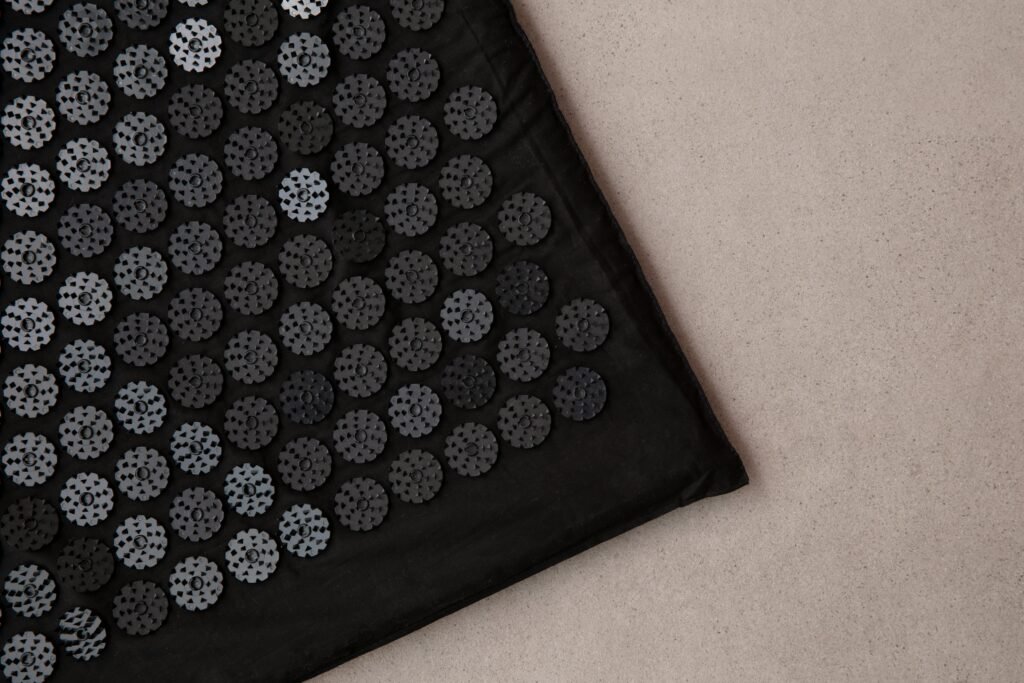
References:
- “Enhance your acupressure practice with an acupressure mat like the ProsourceFit Acupressure Mat and Pillow Set for targeted relief.”
Supplement suggestions:
- “Support your body’s healing process with an herbal supplement like Traditional Medicinals Organic Ginger Tea to reduce inflammation.”
Recommended Course:
- “Learn the basics of acupressure with the Acupressure for Beginners Course on Udemy.”
2. The Benefits of Acupressure
Pain Relief: Acupressure is widely used for alleviating various types of pain, including headaches, back pain, neck pain, and joint discomfort. By targeting specific acupoints, acupressure can help to release tension, increase circulation, and reduce pain naturally.
Reduces Stress and Anxiety: Acupressure has a calming effect on the nervous system, helping to reduce stress, anxiety, and promote relaxation. It’s an excellent method for managing daily stressors and promoting emotional wellness.
Improves Energy Flow: By stimulating acupoints along the body’s meridians, acupressure helps to balance the flow of Qi, leading to improved overall energy levels and vitality. It’s a great practice for revitalizing your body and mind.
Enhances Sleep Quality: Regular acupressure sessions can promote better sleep by relaxing the body and calming the mind. For those who struggle with insomnia or poor sleep quality, acupressure offers a natural, drug-free solution.
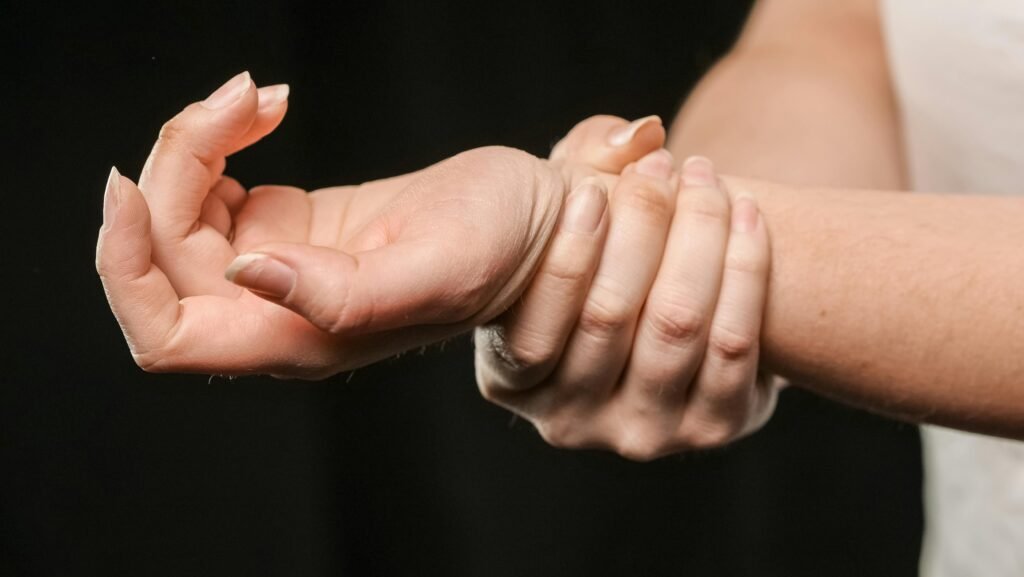
References:
- “Try the Zyllion Shiatsu Back and Neck Massager for targeted acupressure relief at home.”
Supplement suggestions:
- “Promote relaxation with a natural sleep aid like Olly Sleep Gummies.”
Recommended Course:
- “Explore the Acupressure for Stress Relief Course on Mindbodygreen to learn techniques for calming the mind and body.”
3. Traditional Healing Practices: Ancient Wisdom for Modern Wellness
For thousands of years, traditional healing practices such as Ayurveda, herbal medicine, and energy healing have been used to promote holistic health and well-being. These time-tested methods focus on treating the root causes of imbalances within the body, rather than just alleviating symptoms. By addressing the mind, body, and spirit as interconnected, traditional healing practices offer a comprehensive approach to achieving wellness.
Today, many people are turning back to these ancient techniques as a natural alternative to modern medicine, seeking ways to boost immunity, improve digestion, and enhance energy levels. Whether you’re looking to manage stress, prevent illness, or restore balance, traditional healing methods provide safe, effective, and natural solutions.
Lorem ipsum dolor sit amet, consectetur adipiscing elit. Ut elit tellus, luctus nec ullamcorper mattis, pulvinar dapibus leo.
Key Traditional Healing Practices
Ayurveda: This ancient Indian system of medicine focuses on balancing the body’s doshas (energetic forces) to maintain health. Through personalized diets, herbs, lifestyle changes, and detoxifying treatments, Ayurveda seeks to restore harmony and optimize vitality.
Herbal Medicine: Herbal remedies have been used worldwide to treat a variety of ailments, from common colds to chronic conditions. By harnessing the power of plants, herbal medicine promotes healing, supports immunity, and can enhance overall wellness.
Energy Healing: Practices like Reiki and Qi Gong focus on balancing the body’s energy flow to promote emotional and physical health. These techniques clear blockages in the body’s energy channels (meridians) and restore the free flow of Qi (life energy), leading to improved vitality and inner peace.

References:
- “Discover the power of Ayurveda with the AYURVEDIC LIVING COURSE on The Ayurvedic Institute.”
Supplement suggestions:
- “Support your immune system with an herbal supplement like Gaia Herbs Echinacea Goldenseal.”
Recommended Course:
- “Learn about herbal medicine with the Herbalism for Beginners Course on Herbal Academy.”
4. Combining Acupressure and Traditional Healing for Holistic Health
When it comes to achieving holistic health, combining acupressure with other traditional healing practices can significantly amplify their benefits. By integrating multiple methods such as Ayurvedic massage, herbal remedies, and energy healing, you can create a powerful synergy that promotes deep relaxation, supports detoxification, and enhances overall well-being. Each practice complements the other, addressing different aspects of health for a more balanced and effective approach.
How Acupressure Enhances Traditional Healing Practices
Acupressure and Ayurvedic Massage: Combining acupressure with Ayurvedic massage can deepen relaxation and improve circulation. While Ayurvedic massage uses specific oils and techniques to balance the body’s energies, acupressure targets specific acupoints to stimulate energy flow, helping to clear blockages and restore balance. Together, these practices promote detoxification, reduce stress, and support overall vitality.
Acupressure and Herbal Remedies: Pairing acupressure with herbal remedies can enhance the therapeutic effects of both. While acupressure stimulates the body’s natural healing energy, herbal remedies work internally to support health, such as boosting immunity or improving digestion. Together, they create a holistic approach that treats both the symptoms and the root causes of health imbalances.
Acupressure and Energy Healing: Acupressure can also be combined with energy healing practices like Reiki or Qi Gong. By focusing on balancing the body’s energy flow through acupressure and energy healing, you promote emotional and physical healing, improve circulation, and restore inner peace. The energy work helps to clear any blockages that acupressure might uncover, promoting a deeper sense of well-being.
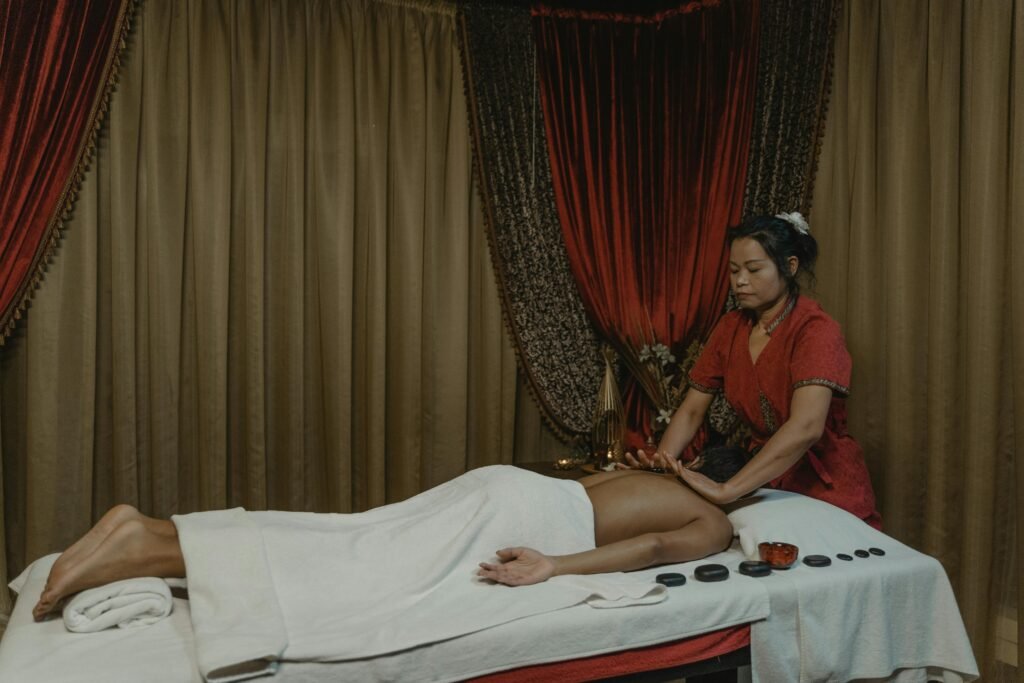
References:
- “Enhance your self-care routine with an Ayurvedic oil like Banyan Botanicals Daily Massage Oil.”
Supplement suggestions:
- “Support detoxification with a liver-cleansing supplement like Milk Thistle by Pure Encapsulations.”
Recommended Course:
- “Explore the Holistic Healing Practices Course on Gaia to learn how to combine acupressure, Ayurveda, and more.”
5. Acupressure for Common Ailments: A Natural Remedy
Acupressure is an ancient healing technique that uses targeted pressure on specific points of the body, known as acupoints, to relieve various ailments. By stimulating these points, acupressure helps balance the flow of Qi (life energy) throughout the body, promoting natural healing and wellness. If you’re looking for natural remedies for everyday health concerns, acupressure offers a simple, effective, and non-invasive solution to address a wide range of common ailments.
How Acupressure Helps with Common Ailments
Headaches: One of the most common uses of acupressure is to relieve headaches. To alleviate tension headaches, apply pressure to the “Union Valley” point, located between the thumb and index finger. This acupoint is believed to help reduce pain and tension in the head and neck, providing relief from headaches and migraines.
Digestive Issues: If you suffer from digestive discomfort such as bloating, indigestion, or constipation, acupressure can help. Stimulating the “Sea of Energy” point, located just below the navel, can help improve digestion by promoting the flow of energy and calming the digestive system. This simple technique can be particularly helpful after meals to support healthy digestion.
Fatigue: If you’re feeling tired or low on energy, acupressure can help you boost your vitality. Pressing the “Three Mile Point” on the lower leg, located about four finger widths below the knee, helps stimulate energy flow and increase stamina. This point is known for its ability to combat fatigue and enhance physical energy.
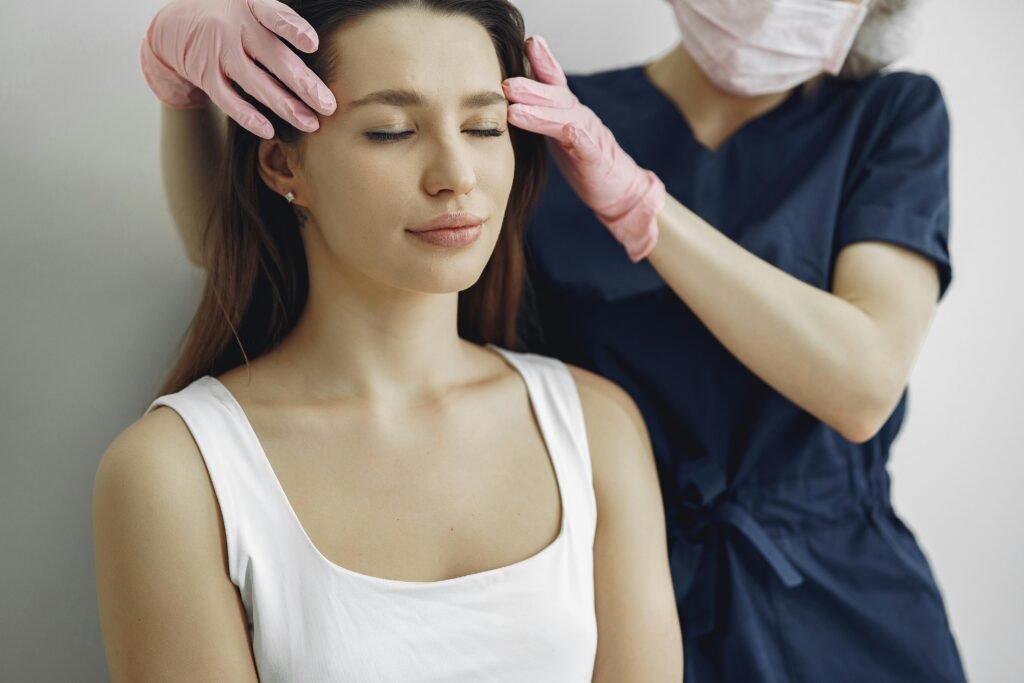
References:
- “Use the Acupressure Pillow for Neck and Shoulder Pain to relieve tension and discomfort.”
Supplement suggestions:
- “Support digestive health with a probiotic supplement like Garden of Life Dr. Formulated Probiotics.”
Recommended Course:
- “Learn how to treat common ailments with the Acupressure for Everyday Health Course on Udemy.”
6. How to Incorporate Acupressure and Traditional Healing into Your Routine
ncorporating acupressure and traditional healing practices into your daily routine is simple and effective for improving overall wellness. Here are a few tips to get started:
Practice Acupressure: Spend 5-10 minutes each morning practicing acupressure on key points like the “Third Eye” or “Sea of Energy” to improve focus and digestion.
Use Herbal Teas or Supplements: Integrate herbal teas like ginger or peppermint, or supplements like turmeric, to support digestion, reduce stress, and boost immunity.
Explore Traditional Healing: Consider adding Ayurveda or Reiki to your routine to enhance your wellness with personalized treatments and energy healing.
Tip: Consistency is key. Regular practice will help you experience lasting health benefits.
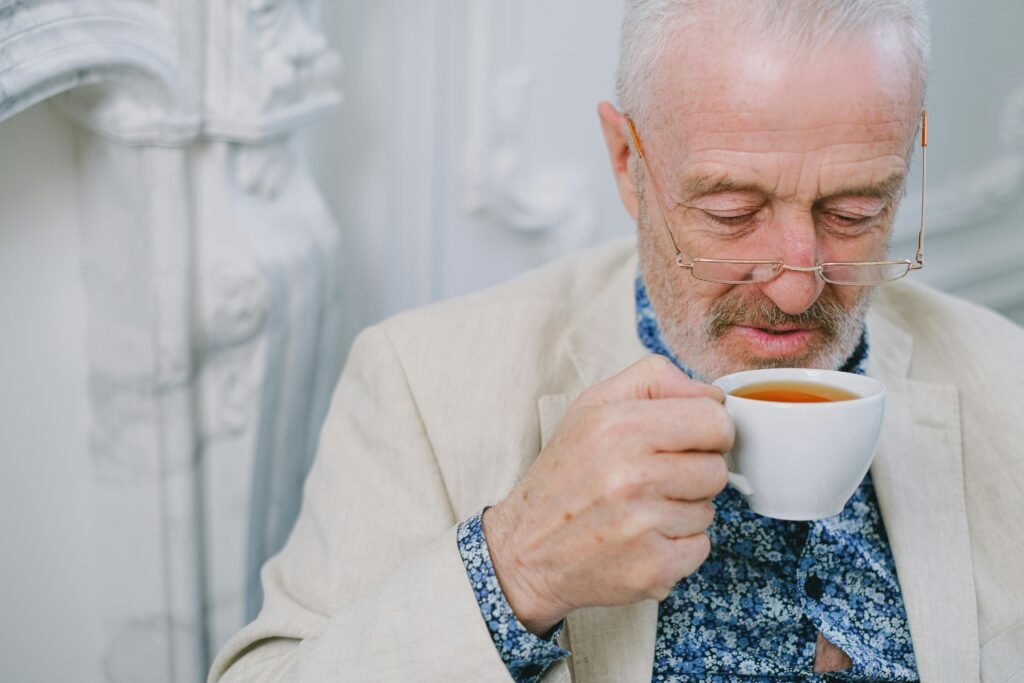
References:
- “Start your day with a calming herbal tea like Yogi Tea Stress Relief.”
Supplement suggestions:
- “Boost your energy levels with an adaptogenic herb like [Ashwagandha by Organic India.”
Recommended Course:
- “Join the Introduction to Traditional Healing Course on Mindbodygreen to explore various holistic practices.”
Conclusion
Acupressure and traditional healing practices offer natural, effective ways to enhance your physical, emotional, and spiritual well-being. Whether you’re looking to relieve pain, reduce stress, or boost your overall vitality, these ancient techniques can help you achieve balance and harmony in your life. By incorporating acupressure, herbal remedies, and other traditional healing methods into your routine, you can unlock your body’s natural healing potential.
Call to Action:
“Ready to explore the healing power of acupressure and traditional practices? Check out our top-rated tools, supplements, and courses here and start your journey to holistic wellness today!”
FAQ
1. Is acupressure safe for everyone?
Yes, acupressure is generally safe for most people. However, if you are pregnant or have a medical condition (such as cancer, heart disease, or a blood clotting disorder), it’s important to consult with a healthcare provider before starting acupressure to ensure it’s safe for your specific health needs.
2. How long does it take to see results from acupressure?
Some people may feel immediate relief from acupressure, while others may need to practice consistently over a few weeks to notice significant improvements. The results depend on the condition being treated and the frequency of practice. Regular acupressure can help provide long-term benefits for pain management, stress relief, and overall wellness.
3. Can I combine acupressure with other treatments?
Absolutely! Acupressure can complement other treatments such as massage, acupuncture, herbal medicine, or Reiki. When combined with other therapies, acupressure can enhance the overall effectiveness and support your body’s healing process. It’s always best to consult with your healthcare provider to create a holistic wellness plan.
4. What are the best acupressure points for stress relief?
To relieve stress, try applying pressure to these effective acupressure points:
- The “Third Eye” Point (between the eyebrows) helps calm the mind and reduce anxiety.
- The “Inner Gate” Point (on the wrist) is excellent for relieving tension and promoting relaxation.
These points are easy to access and can help you relax quickly during stressful situations.
5. Do I need special training to practice acupressure?
No, you don’t need special training to practice basic acupressure techniques at home. Simple acupressure methods can be learned and applied with minimal guidance. However, if you want to deepen your knowledge and explore more advanced techniques, taking a course or working with a certified acupressure practitioner can enhance your practice and effectiveness.
Disclaimer
This article is for informational purposes only and is not intended to replace professional medical advice, diagnosis, or treatment. Always consult with a healthcare provider before starting any new fitness, supplement, or wellness routine, especially if you have pre-existing health conditions. Some links in this article are affiliate links, which means we may earn a small commission if you purchase through them at no extra cost to you. This helps support our work and allows us to continue providing valuable content. Thank you for your support!
